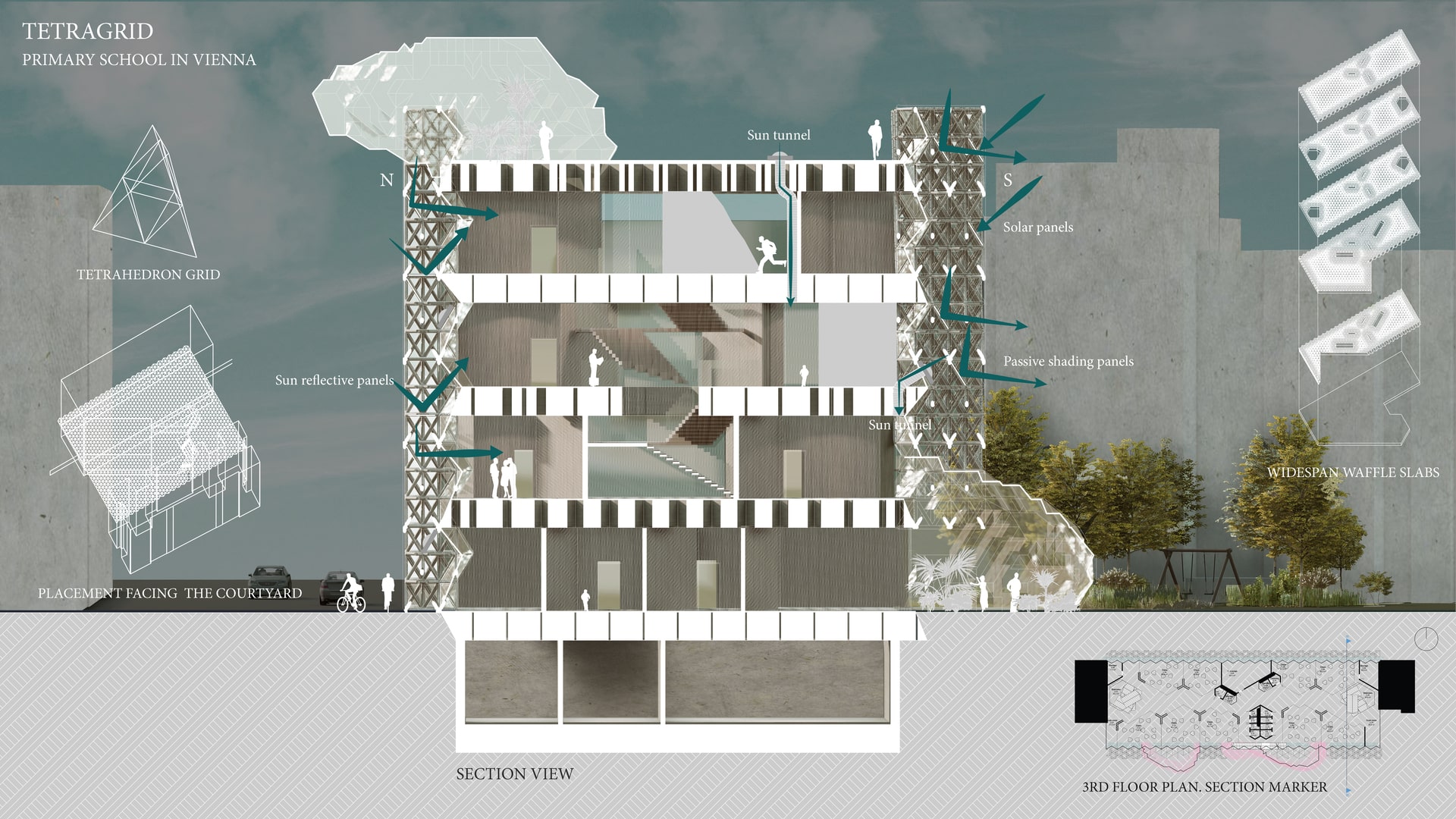Project Description
The aim of this project is to experiment on the theme of the International VELUX Award “Light of Tomorrow” in a field, where the maximum use of natural daylight has a major impact on - primary school education. On the sub-theme chosen for this project, “The School of Tomorrow” we seek to use the maximum potential of the given site and wood as the main construction material, whereas not forgetting the functionality of a future living-learning environment for primary school children. Our daylight project aims to search for new means of primary school education through a new type of space planning, characterised by a large area of modifiable space according to the users’ needs. This gives the teachers a possibility to create classrooms based on the study group size, the type of learning, demands for acoustic and visibility levels etc. This type of future-oriented planning also guarantees that the building will be able to entertain another function in the future, if the current function might change. As this primary school is designed to be an all-day school, it has to take into consideration the users’ different needs throughout the whole day - learning by the day, longer study groups in the evening, spaces for bigger events. This is the reason the school is built up using only one primary system - an imaginative tetrahedron grid in 2D and 3D which allows several variations in the space design. The grid permits to create playful spaces inside the building as well as outside, creating a healthy study environment and promoting the wellbeing of children. It is also the basis for the most important element of the project considering daylight manipulation - the facade pipe-grid. The site of the project is situated in the 14th district in Vienna and is influenced by many local constraints, making the maximum use of day- and sunlight more challenging. The north facade of the future school is looking on a narrow street towards another building of the same height, which raises the importance of obtaining the maximum amount of daylight from above - through the ceiling or the facade reflections. The south facade on the other hand is facing a large private courtyard toward another already existing school building. The building is structurally made up using the same tetrahedron grid which helps to create the wide span floor slabs. The cross sections of those bearing floor beams have been calculated to optimize the material use. Structurally, the floors are supported by three main structural wall elements in the central area and on both shorter facades of the building, as well as the weight bearing pipe-grid on the facades. The north facade which faces the street could benefit from daylight the most, but due to the proximity of the opposite building is affected by the need for privacy in the inside spaces. The pipe-like grid on the north facade hosts reflective panels that gather up the light from the sun and blue sky to guide it into the building and brighten up the interior. The reflective panels and the dense skin provide more visual barrier-privacy for the pupils at school. Both facade grids have window openings for fresh air as well as shadings to keep the interior from overheating. The south facade facing the courtyard is more transparent to create a stronger connection between the two schools. The pipe-grid on the south facade is thicker and carries more functions in comparison to the north facade. Similar to panels on the north, the south facade has solar or passive shading panels that can be placed on many angles in the grid. The south facade grid is intentionally wider than the north one to support extra circulacion and/or classroom space with extended blob-like spaces. The blobs can also be used as a small greenhouse for growing plants, host events or as a learning space for movie nights or night sky studies on the roof. In the interior, the more public the functions are in the school building (sports hall, library etc) the more close to the street are they situated. As the functions grow more private (clusters and study areas), the higher are they situated in the building. Another benefit from the open-space changeable study areas and low quantity of internal structural walls is the possibility to keep the space between the two facades completely open and see-through, enabling clarity and daylight penetration. The simple box-like school is reshaped by stretch-outs and cut-ins that follow the 2D grid, host different functions and mark the positions of the main entrances and a bike park to make orientation in spaces easier for children and other users.
